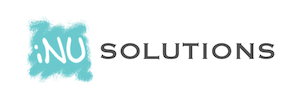Frequently Asked Questions
Yes, although the maximum number depends on the USB dongle you are using. For example, the ANTUSB-m supports 8 channels (devices).
Yes, you are free to create your own profiles, encode and decode your own messages, whatever you need, as long as it fits within the ANT Protocol.
Yes, the Toolkit comes with a 7 day trial license.
Yes. The Toolkit is implemented in such a way that one VI on the block diagram does one thing, so you can simply add the command you require, on the channel you require.
The Toolkit can be used with LabVIEW 2013 and later. It does not matter if it is 32 or 64 bit.
We have tested the Toolkit on a RIO Development board that is running the LabVIEW RTOS and it works ok.
Be aware that this board has a built in USB port for the Dongle, not all NI RTOS hardware has this.
While the toolkit will run on any version of Windows that Supports LabVIEW 2013 and onwards, it is not possible to use it with Windows 10.
This is due to the use of the NI VISA driver that cannot be installed on a Windows 10 machine, as it is not digitally signed. While there are ways to allow it to be installed, we do not give support on this.
Take a look here for more information from NI regarding installing VISA drivers in Windows 8.1 & 10
Yes. If for example you install and activate the Toolkit in LabVIEW 2014 and then upgrade to LabVIEW 2015, you will not need to purchase a separate license.
You will however need to reinstall the Toolkit using VIPM, making sure you select LabVIEW 2015 in the version list.
While using LVOOP would have been a good solution for more advanced users of LabVIEW, we wanted to make sure that everyone could take advantage of the Toolkit regardless of experience, kind of what LabVIEW is all about
While using the standard dll library would have been an option, we wanted to make sure that the Toolkit works on all platforms.
By using the raw data commands it does not matter what OS you are using, as long as you can access the USB ports.
